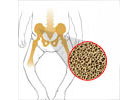A new study suggests that negative iron balance predicts survival in patients with acute heart failure.

She continued: "Previous studies have shown that patients at high cardiovascular risk – for example diabetics with coronary artery disease or patients with stable chronic heart failure – may develop iron deficiency which leads to recurrent hospitalisations and increased mortality."
Professor Piotr Ponikowski, last author, said: "We have data showing that iron may be important for clinical outcomes in chronic heart failure and correction of iron deficiency in these patients is beneficial. This is the first study of iron status in acute heart failure."
Iron deficiency has traditionally been measured using serum ferritin to track iron stores and transferrin saturation (TSAT) to assess iron utilisation in the cell. These measures cannot be reliably interpreted in acute clinical settings because they are influenced by inflammation and oxidative stress.
The researchers therefore proposed a new, more sensitive, measure for acute heart failure which can best characterise iron deficiency in these settings. This refers to both depleted iron stores, measured by circulating hepcidin, and unmet cellular iron needs, measured by soluble transferrin receptor. The receptor is expressed on all cells and enables iron to enter the cell. When there is not enough iron in the cell, the receptor is overexpressed and shed into the circulation. Concomitance of low hepcidin and high soluble transferrin receptor reflects the most severe form of iron deficiency (lack of iron in the body accompanied by iron need), which the investigators called negative iron balance (NIB).
This prospective, observational study included 165 patients hospitalised for acute heart failure. The researchers assessed the prevalence of NIB and its impact on 12 month mortality.
Advertisement
Professor Jankowska said: "Our study shows that deranged iron status is common in acute heart failure. Mortality in the patients with NIB was high during the 12 month follow up, whereas all of the patients with no iron abnormalities survived to one year."
Advertisement
The researchers also measured the standard parameters of iron status, serum ferritin and TSAT, and found that they were less able to predict 12 month mortality than NIB. Levels of serum ferritin and TSAT were only weakly correlated with hepcidin and soluble transferrin receptor.
Professor Ponikowski said: "Levels of hepcidin and soluble transferrin receptor are more clinically relevant in patients with acute heart failure than traditional measures of iron status. We propose a new pathophysiological definition of iron deficiency which accurately reflects stored and utilised iron in patients with acute heart failure."
Both concluded: "Iron supplementation may reverse NIB and improve survival in acute heart failure patients but this needs to be tested in a randomised clinical trial. We hope to initiate such trial soon."
Source-Eurekalert














